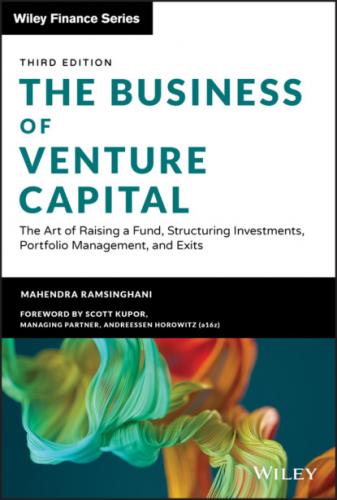The Business of Venture Capital. Mahendra Ramsinghani
down, removes his shades and says in his gravelly husky voice, ”We really should move away, really, really move away from that strategy.” Would there be a chorus of “ayes” followed by, “And now can we get your autograph, picture, and a hug?” We often subconsciously gravitate toward people who look like us, who agree with or compliment us, or are physically attractive, writes author Robert Cialdini. It’s called similarity, compliance, association, and cooperation. Such psychological nuances often make one board member persuasive over others, creating a halo effect. These aspects of human behavior may be especially troubling in the context of a venture capital. While these cannot be avoided, we need to recognize them and make sure that we can tackle them effectively. Watch for pandering when one board member excessively grovels at the feet of another VC demigod. They are setting the stage for groupthink.
Networks: That overhyped Rolodex is not as useful as you think. VCs may have 1000+ connections on LinkedIn but a human brain only has the capacity to keep track of about 150 connections. Beyond that, it's all a pile of data. Research shows that the size of our brain determines the size of our “active” network, where we maintain these relationships in a meaningful fashion. And our prefrontal cortex can process only about 150 connections. Noted author Malcolm Gladwell pointed out in The Tipping Point that productivity declines once the size of the company grows beyond 150 people.14 In such networks, the grease of information and activities — getting together for a beer, a hike, or a game — keeps it running smoothly. The power of reciprocity works well and the network is alive. But if we try to expand the network without being able to nourish it meaningfully, the ability to impact and reciprocate in such a network crumbles. Bottom line: Don't believe in your own ability to tap in your 1,000+ LinkedIn contacts — keep your expectations low.
What Makes a Good Investor?
A Guarded Optimist
You have to believe that the world can change…be optimistic and at the same time, be realistic and guarded, not romantic.15
—Terry McGuire, Co-Founder, Polaris Ventures, and former Chairman of the National Venture Capital Association
The goal of this chapter is to help practitioners improve their game while appreciating the softer undertones of how we behave. We are complex, emotional beings, each motivated by different drivers and insecurities. Is your investment decision driven by independent, honest analysis and supported by facts? As investor Peter Thiel points out, “Humans are massively cognitively biased in favor of near-term thinking. VCs are no different.”16
NOTES
1 1. William H. Draper, III, “Early Bay Area Venture Capitalists: Shaping the Economic and Business Landscape,” interview by Sally Smith Hughes, 2008, accessed January 13, 2011, http://digitalassets.lib.berkeley.edu/roho/ucb/text/draper_william.pdf.
2 2. Andrew Adams Schoen, “Quantum Computing: Time for Venture Capitalists to Put Chips on the Table,” LinkedIn, March 19, 2016, www.linkedin.com/pulse/quantum-computing-time-venture-capitalists-put-chips-table-schoen/ accessed on August 25, 2019.
3 3. C. Richard Kramlich, “Venture Capital Greats: A Conversation with C. Richard Kramlich,” interview by Mauree Jane Perry.
4 4. Donald T. Valentine, “Early Bay Area Venture Capitalists: Shaping the Economic and Business Landscape,” interview by Sally Smith Hughes, 2009, accessed January 13, 2011, http://digitalassets.lib.berkeley.edu/roho/ucb/text/valentine_donald.pdf.
5 5. Rob Hayes, in discussion with the author, October 2010.
6 6. Paul Bancroft III, “Early Bay Area Venture Capitalists: Shaping the Economic and Business Landscape,” interview by Sally Smith Hughes, 2010, accessed January 13, 2011, http://digitalassets.lib.berkeley.edu/roho/ucb/text/bancroft_pete.pdf.
7 7. Tim Ferris, Tribe of Mentors (New York: Houghton Mifflin Harcourt, 2017).
8 8. McRaney describes the case of a brain-tumor patient who lost his emotional responses and became a complete wreck, as he could not make any decisions.
9 9. Source: http://www.paulgraham.com/guidetoinvestors.html
10 10. Rivlin, “So You Want to Be a Venture Capitalist,” New York Times, May 22, 2005.
11 11. James R. Swartz, “Venture Capital Greats: A Conversation with James R. Swartz,” interview by Mauree Jane Perry, 2006, accessed January 13, 2011, http://digitalassets.lib.berkeley.edu/roho/ucb/text/swartz_james_donated.pdf.
12 12. Reid Dennis, “Early Bay Area Venture Capitalists: Shaping the Economic and Business Landscape,” interview by Sally Smith Hughes, 2009, accessed January 13, 2011, http:// digitalassets.lib.berkeley.edu/roho/ucb/text/dennis_reid.pdf.
13 13. William K. Bowes, Jr., “Early Bay Area Venture Capitalists: Shaping the Economic and Business Landscape,” interview by Sally Smith Hughes, 2008, accessed January 13, 2011, http://digitalassets.lib.berkeley.edu/roho/ucb/text/bowes_william.pdf.
14 14. Source: Malcolm Gladwell, The Tipping Point: How Little Things Can Make a Difference (New York: Little Brown, 2000).
15 15. Terry McGuire (Co-Founder, Polaris Ventures, and Chairman Emeritus of the National Venture Capital Association), in discussion with the author, November 2010.
16 16. Blake Masters, “Peter Thiel's CS183: Startup Class 8 Notes Essay,” May 2, 2012, blog, http://blakemasters.com/post/22271192791/peter-thiels-cs183-startup-class-8-notes-essay.
6 A Business Where Enemies Accumulate
CHALLENGES OF A VC CAREER
Steve Jobs was not impressed by venture
